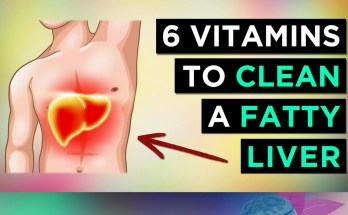Blood clots are a serious medical condition that can lead to life-threatening complications if left untreated. While they play an essential role in stopping bleeding when you’re injured, abnormal blood clots can form in veins or arteries and disrupt normal blood flow. Recognizing the warning signs early is crucial for seeking timely medical intervention. Below, we outline the top 10 warning signs of blood clots and what you should know about them.
1. Unexplained Swelling
Swelling is one of the most common symptoms of a blood clot, particularly in the legs or arms. Unlike typical swelling from minor injuries or fatigue, this type of swelling is often localized and may occur without any apparent cause. It’s usually accompanied by other symptoms like pain or redness.
- What to Watch For: Persistent swelling that doesn’t subside with rest or elevation.
- Why It Happens: Blood pooling due to a blockage in the vein causes fluid buildup in surrounding tissues.
2. Pain or Tenderness
Sudden, unexplained pain in your leg or arm could be a sign of deep vein thrombosis (DVT). This pain often feels like cramping or soreness and tends to worsen over time rather than improve.
- What to Watch For: Pain that intensifies when walking, standing, or touching the affected area.
- Why It Happens: A clot obstructs blood flow, leading to inflammation and discomfort.
3. Skin Discoloration
A noticeable change in skin color near the site of a suspected clot is another red flag. The skin may appear reddish, bluish, or even purplish due to poor circulation caused by the clot.
- What to Watch For: Patches of discoloration that don’t fade with time.
- Why It Happens: Reduced oxygen supply alters skin pigmentation around the blocked vein.
4. Warmth Around the Affected Area
The skin near a blood clot may feel unusually warm compared to surrounding areas. This warmth is often accompanied by redness and swelling.
- What to Watch For: Localized heat sensation that persists for hours or days.
- Why It Happens: Inflammation triggered by restricted blood flow raises skin temperature.
5. Shortness of Breath
Difficulty breathing can indicate a pulmonary embolism (PE), which occurs when a blood clot travels to your lungs. This symptom requires immediate medical attention as it can be life-threatening.
- What to Watch For: Sudden breathlessness during rest or mild activity.
- Why It Happens: A clot blocks oxygen-rich blood from reaching lung tissue.
6. Chest Pain
Chest pain associated with a blood clot is typically sharp and worsens when you take deep breaths. While chest pain can have many causes, it’s critical not to dismiss it as minor if it persists.
- What to Watch For: Constant chest heaviness, pressure, or shooting pain radiating toward your back.
- Why It Happens: A pulmonary embolism restricts oxygen flow, causing strain on your heart and lungs.
7. Coughing Up Blood
Coughing up significant amounts of blood-streaked mucus could signal a severe complication like PE. This symptom often accompanies shortness of breath and chest discomfort.
- What to Watch For: Teaspoons or tablespoons of bright red blood in sputum.
- Why It Happens: A blocked artery damages lung tissue, leading to bleeding into airways.
8. Rapid Heart Rate
An unusually fast heartbeat (tachycardia) might occur as your body compensates for reduced oxygen levels caused by a clot blocking circulation.
- What to Watch For: Persistent heart palpitations even while at rest.
- Why It Happens: Your heart works harder to pump oxygen-depleted blood through narrowed vessels.
9. Dizziness or Fainting
Feeling lightheaded or fainting could indicate reduced oxygen delivery throughout your body due to a significant blockage caused by a clot.
- What to Watch For: Episodes of dizziness that come on suddenly without other explanations.
- Why It Happens: Restricted circulation impacts brain function temporarily until normal flow resumes.
10. Severe Abdominal Pain
Blood clots can also form in abdominal veins (splanchnic vein thrombosis), leading to intense stomach pain that doesn’t improve with rest or medication.
- What to Watch For: Persistent abdominal discomfort paired with nausea or vomiting.
- Why It Happens: Blockages disrupt normal digestion and organ function within the abdomen.
When Should You Seek Medical Attention?
If you experience any combination of these symptoms—especially shortness of breath, chest pain, coughing up blood, or severe swelling—it’s vital to seek immediate medical care. Blood clots are treatable if caught early but can escalate quickly into life-threatening conditions such as pulmonary embolism (PE) or stroke if ignored.
Doctors may use diagnostic tools like ultrasound imaging for DVTs and CT scans for suspected PEs to confirm their presence before initiating treatment such as anticoagulants (blood thinners).
How Can You Prevent Blood Clots?
While some risk factors like genetics are unavoidable, lifestyle changes can significantly reduce your chances of developing abnormal clots:
- Stay physically active—avoid prolonged sitting during travel.
- Maintain healthy body weight through diet and exercise.
- Quit smoking as it increases clotting risks.
- Follow prescribed treatments if you have underlying conditions like venous insufficiency.
- Stay hydrated; dehydration thickens your blood making clots more likely!
By staying informed about these warning signs and taking preventive measures seriously, you can protect yourself from potentially dangerous complications related to abnormal blood clots!
Top 3 Authoritative Sources Used:
- Cleveland Clinic
Cleveland Clinic provides expert-reviewed health information on various medical conditions including vascular diseases like DVTs and pulmonary embolisms based on evidence-based practices from specialists worldwide. - Centers for Disease Control and Prevention (CDC)
The CDC offers comprehensive resources on public health concerns including venous thromboembolism (VTE), prevention strategies, risk factors analysis & treatment guidelines supported by extensive research studies globally recognized standards! - American Society of Hematology (ASH)
ASH specializes in advancing knowledge about disorders affecting blood systems offering peer-reviewed journals clinical guidelines educational materials tailored towards both healthcare professionals patients alike!
Here’s If You Love to Read More: 6 Essential Vitamins to Support Hormonal Balance in Women
Here’s Another You Love to Read : GlobalStory





